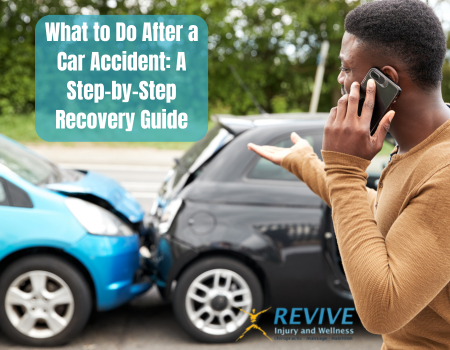
Being in a car accident can turn your day—and sometimes your life—upside down in seconds. From the shock of impact to the confusion of what to do next, it’s easy to feel lost or overwhelmed. Whether it’s a minor bump or a serious crash, knowing how to respond can make a big difference in protecting your health, rights, and recovery.
Here’s a simple, step-by-step guide to help you navigate life after a car accident with confidence and clarity.
Step 1: Make Sure Everyone is Safe
Start by checking yourself for any injuries. Check on your passengers to make sure they’re okay as well. If someone is hurt or unresponsive, call emergency services immediately.
If you’re unharmed and the vehicle isn’t in a hazardous location, move it away from traffic to a safer spot. Turn on your hazard lights to make yourself visible to other drivers.
Step 2: Contact the Police
It doesn’t matter whether it’s a small accident or not, it’s important to call the police. They’ll assess the situation and create an official accident report, which could be vital later when dealing with insurance companies or legal matters.
When officers arrive, describe the incident calmly and stick to the facts. Avoid assigning blame or admitting fault at the scene—just explain what happened clearly.
Step 3: Gather Key Information
While waiting for authorities to arrive—or right after—exchange details with the other driver(s). You’ll need:
- Full name and phone number
- Driver’s license number
- Insurance company and policy number
- Vehicle make, model, and license plate
Even if you feel fine, it’s a good idea to get a medical check-up. Then, take pictures or videos of the scene, including all vehicles, the road, traffic signs, and any damage or injuries. These visuals can be useful evidence later on.
Step 4: Get Checked by a Medical Professional
Even if you feel okay, it’s smart to get a medical evaluation. Some injuries, like internal bruising or neck strain, may not show symptoms immediately but could get worse if ignored.
Keep records of any doctor visits, diagnoses, treatments, and prescriptions—especially if you plan to file a claim for compensation or insurance.
Step 5: Notify Your Insurance Provider
Contact your insurance company promptly to report the accident. Provide the facts, share any photos or documents you collected, and answer their questions honestly.
They’ll explain the next steps, which could include an investigation, vehicle repair instructions, or a review of coverage options.
Step 6: Track Your Expenses and Interactions
Start a file (digital or physical) where you can store all receipts, bills, reports, and emails related to the accident. This includes repair estimates, medical costs, transportation receipts, and lost income if you missed work.
Keeping things organized will save you a lot of time and stress if you need to make an insurance claim or consult a legal expert.
Step 7: Don’t Ignore the Emotional Impact
Car accidents can be traumatic, even if no one was seriously hurt. Feelings like fear, anxiety, or guilt are common and valid. If you’re having trouble sleeping, driving, or focusing, consider speaking with a mental health professional who can support your emotional recovery.
Step 8: Consider Legal Advice (If Needed)
If there’s uncertainty about fault or you’re facing significant injuries or property damage, consulting a lawyer could be beneficial. A legal expert can help you understand your rights and make sure you’re treated fairly during any claims or settlements.
Recovering after a car accident isn’t just about fixing your car—it’s about protecting your health, understanding your options, and taking steps that support your long-term well-being. By staying calm, informed, and proactive, you’ll be better equipped to handle the situation and move forward with peace of mind.


